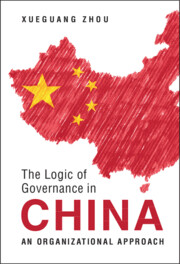Book contents
- The Logic of Governance in China
- The Logic of Governance in China
- Copyright page
- Contents
- Figures and Tables
- Preface
- Abbreviations
- 1 Introduction: The Logic of Governance in China
- Part I The Logic of Governance: Institutions and Mechanisms
- Part II The Logic of Governance and Government Behavior
- Part III The Logic of Governance and Chinese Society
- 9 The Road to Collective Debt: Bureaucrats Meet Villagers
- 10 Multiple Logics of Village Elections
- 11 Unorganized Interests and Collective Action
- 12 Conclusion: The Logic of Governance and the Future of China
- Glossary
- References
- Index
12 - Conclusion: The Logic of Governance and the Future of China
from Part III - The Logic of Governance and Chinese Society
Published online by Cambridge University Press: 16 December 2022
- The Logic of Governance in China
- The Logic of Governance in China
- Copyright page
- Contents
- Figures and Tables
- Preface
- Abbreviations
- 1 Introduction: The Logic of Governance in China
- Part I The Logic of Governance: Institutions and Mechanisms
- Part II The Logic of Governance and Government Behavior
- Part III The Logic of Governance and Chinese Society
- 9 The Road to Collective Debt: Bureaucrats Meet Villagers
- 10 Multiple Logics of Village Elections
- 11 Unorganized Interests and Collective Action
- 12 Conclusion: The Logic of Governance and the Future of China
- Glossary
- References
- Index
Summary
While it is true that Western tradition has supplied much of the basis for the world civilization now emerging, it remains to be seen whether China will participate in that world culture in the same sense that Algeria or India or Japan or Nigeria will; China may yet throw out a powerful challenge to the Western principles upon which the emerging international culture is based.
G. William Skinner (1964, p. 518)- Type
- Chapter
- Information
- The Logic of Governance in ChinaAn Organizational Approach, pp. 301 - 316Publisher: Cambridge University PressPrint publication year: 2022

